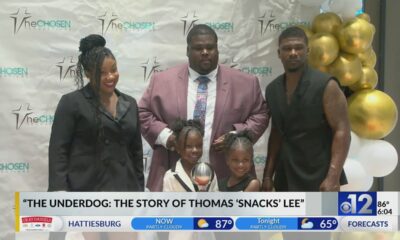Kaiser Health News
E-Cigs Are Still Flooding the US, Addicting Teens With Higher Nicotine Doses
by Liz Szabo, KFF Health News
Mon, 26 Jun 2023 09:00:00 +0000
When the FDA first asserted the authority to regulate e-cigarettes in 2016, many people assumed the agency would quickly get rid of vapes with flavors like cotton candy, gummy bears, and Froot Loops that appeal to kids.
Instead, the FDA allowed all e-cigarettes already on the market to stay while their manufacturers applied for the OK to market them.
Seven years later, vaping has ballooned into an $8.2 billion industry, and manufacturers are flooding the market with thousands of products — most sold illegally and without FDA permission — that can be far more addictive.
“The FDA has failed to protect public health,” said Eric Lindblom, a former senior adviser to the director of the FDA's Center for Tobacco Products. “It's a tragedy.”
Yet the FDA isn't the only entity that has tolerated the selling of vapes to kids.
Multiple players in and out of Washington have declined to act, tied the agency's hands, or neglected to provide the FDA with needed resources. Former Presidents Barack Obama and Donald Trump both have prevented the FDA from broadly banning candy-flavored vapes.
Meanwhile, today's vapes have become “bigger, badder, and cheaper” than older models, said Robin Koval, CEO of the Truth Initiative, a tobacco control advocacy group. The enormous amount of nicotine in e-cigarettes — up 76% over five years — can addict kids in a matter of days, Koval said.
E-cigarettes in the U.S. now contain nicotine concentrations that are, on average, more than twice the level allowed in Canada and Europe. The U.S. sets no limits on the nicotine content of any tobacco product.
“We've never delivered this level of nicotine before,” said Matthew Myers, president of the Campaign for Tobacco-Free Kids, which opposes youth vaping. “We really don't know the long-term health implications.”
Elijah Stone was 19 when he tried his first e-cigarette at a party. He was a college freshman, grappling with depression and attention-deficit/hyperactivity disorder, and “looking for an escape.” Store clerks never asked for his ID.
Stone said he was “hooked instantly.”
“The moment I felt that buzz, how was I supposed to go back after I felt that?” asked Stone, now 23, of Los Angeles.
The e-cigarette industry maintains that higher nicotine concentrations can help adults who smoke heavily switch from combustible cigarettes to vaping products, which are relatively less harmful to them. The FDA has approved high-nicotine, tobacco-flavored e-cigarettes for that purpose, said April Meyers, CEO of the Smoke-Free Alternatives Trade Association.
“The goal is to get people away from combustible products,” said Nicholas Minas Alfaro, CEO of Puff Bar, one of the most popular brands with kids last year. Yet Alfaro acknowledged, “These products are addictive products; there's no hiding that.”
Although e-cigarettes don't produce tar, they do contain harmful chemicals, such as nicotine and formaldehyde. The U.S. Surgeon General has warned that vaping poses significant risks: including damage to the heart, lungs, and parts of the brain that control attention and learning, as well as an increased risk of addiction to other substances.
More than 2.5 million kids used e-cigarettes in 2022, including 14% of high school students, according to the Centers for Disease Control and Prevention.
Most U.S. teen vapers begin puffing within an hour of waking up, according to a survey of e-cigarette users ages 16 to 19 presented at the Society for Research on Nicotine and Tobacco in March.
The potential for profits — and lax enforcement of vaping laws — has led to a gold rush. The number of unique vaping products, as measured by their bar codes, quadrupled in just one year, rising from 453 in June 2021 to 2,023 in June 2022, according to a Truth Initiative review of U.S. retail sales data.
FDA officials say they've been overwhelmed by the volume of e-cigarette marketing applications — 26 million in all.
“There is no regulatory agency in the world that has had to deal with a volume like that,” said Brian King, who became director of the FDA's Center for Tobacco Products in July 2022.
The agency has struggled to stop e-cigarette makers who continue selling vapes despite the FDA's rejection of the products, as well as manufacturers who never bothered to apply for authorization, and counterfeiters hoping to earn as much money as possible before being shut down.
In 2018, public health groups sued the agency, charging that the delay in reviewing applications put kids at risk. Although a court ordered the FDA to finish the job by September 2021, the FDA missed that deadline. An estimated 1.2 million people under the legal age of 21 began vaping over the next year, according to a study published in May in the American Journal of Preventive Medicine.
Recently, the FDA announced it has made decisions on 99% of e-cigarette applications, noting that it had rejected millions and authorized 23. All authorized products have traditional tobacco flavors, and were deemed “appropriate for the protection of public health” because tobacco-flavored products aren't popular with children but provide adult smokers with a less dangerous alternative, King said.
The agency has yet to make final decisions on the most popular products on the market. Those applications are longer and need more careful scientific review, said Mitch Zeller, former director of the FDA's Center for Tobacco Products and a current advisory board member for Qnovia, which is developing smoking-cessation products.
The FDA said it would not complete reviewing applications by the end of June, as it previously forecast, but would need until the end of the year.
Before the FDA can announce new tobacco policies, it needs approval from the president — who doesn't always agree with the FDA's priorities.
For example, Obama rejected FDA officials' proposal to ban kid-friendly flavors in 2016.
And in 2020, Trump backpedaled on his own plan to pull most flavored vapes off the market. Instead of banning all fruit and minty flavors, the Trump administration banned them only in “cartridge-based” devices such as Juul. The flavor ban didn't affect vapes without cartridges, such as disposable e-cigarettes.
The result was predictable, Zeller said.
Teens switched in droves from Juul to brands that weren't affected by the ban, including disposable vapes such as Puff Bar, which were allowed to continue selling candy-flavored vapes.
After receiving its own warning letter from the FDA last year, Puff Bar now sells only zero-nicotine vapes, Alfaro said.
When the FDA does attempt bold action, legal challenges often force it to halt or even reverse course.
The FDA ordered Juul to remove its products from the market in June 2022, for example, but was immediately hit with a lawsuit. The U.S. Court of Appeals for the D.C. Circuit sided with Juul and issued a temporary stay on the FDA's order. Within weeks, the FDA announced it would hold off on enforcing its order because of “scientific issues unique to the JUUL application that warrant additional review.”
E-cigarette makers Logic and R.J. Reynolds Vapor Co. both sued the FDA after the agency ordered them to stop selling menthol vapes, a flavor popular with teens. In both cases, court-imposed stays halted the FDA's orders pending review and the companies' menthol products remain on the market.
Luis Pinto, a spokesperson for parent company Reynolds American, said, “We remain confident in the quality of all of Reynolds' applications, and we believe that there is ample evidence for FDA to determine that the marketing of these products is appropriate for the protection of public health.”
Under the Biden administration, the FDA has begun to step up enforcement efforts. It fined 12 e-cigarette manufacturers more than $19,000 each, and has issued more than 1,500 warning letters to manufacturers. The FDA also issued warnings to 120,000 retailers for selling illegal products or selling to customers under 21, King said. Five of the companies that received warning letters made vapes decorated with cartoon characters, such as Minions, or were shaped like toys, including Nintendo Game Boys or walkie-talkies.
In May, the FDA put Elfbar and other unauthorized vapes from China on its “red list,” which allows FDA agents to detain shipments without inspection at the border. On June 22, the FDA announced it has issued warning letters to an additional 189 retailers for selling unauthorized tobacco products, specifically Elfbar and Esco Bars products, noting that both brands are disposable e-cigarettes that come in flavors known to appeal to youth, including bubblegum and pink lemonade.
In October, the Justice Department for the first time filed lawsuits against six e-cigarette manufacturers on behalf of the FDA, seeking “to stop the illegal manufacture and sale of unauthorized vaping products.”
Some lawmakers say the Justice Department should play a larger role in prosecuting companies selling kid-friendly e-cigarettes.
“Make no mistake: There are more than six e-cigarette manufacturers selling without authorization on the market,” Sen. Dick Durbin (D-Ill.) said in a March letter. Children are “vaping with unauthorized products that are on store shelves only because FDA has seemingly granted these illegal e-cigarettes a free pass.”
By: Liz Szabo, KFF Health News
Title: E-Cigs Are Still Flooding the US, Addicting Teens With Higher Nicotine Doses
Sourced From: kffhealthnews.org/news/article/e-cigs-are-still-flooding-the-us-addicting-teens-with-higher-nicotine-doses/
Published Date: Mon, 26 Jun 2023 09:00:00 +0000
Did you miss our previous article…
https://www.biloxinewsevents.com/were-not-doing-that-why-a-black-couple-wouldnt-crowdfund-to-pay-off-medical-debts/
Kaiser Health News
Journalists Delve Into Climate Change, Medicaid ‘Unwinding,’ and the Gap in Mortality Rates
Sat, 04 May 2024 09:00:00 +0000
KFF Health News senior correspondent Samantha Young discussed Medicaid and climate change on KCBS Radio's “On-Demand” podcast on April 29.
- Click here to hear Young on KCBS
- Read Young's “AC, Power Banks, Mini Fridges: Oregon Equips Medicaid Patients for Climate Change“
KFF Health News contributor Andy Miller discussed Medicaid unwinding on WUGA's “The Georgia Health Report” on April 26.
- Click here to hear Miller on “The Georgia Health Report”
- Read Phil Galewitz' “Millions Were Booted From Medicaid. The Insurers That Run It Gained Medicaid Revenue Anyway.“
KFF Health News Nevada correspondent Jazmin Orozco Rodriguez discussed mortality rates in rural America on The Daily Yonder's “The Yonder Report” on April 24.
- Click here to hear Rodriguez on “The Yonder Report”
- Read Rodriguez' “City-Country Mortality Gap Widens Amid Persistent Holes in Rural Health Care Access”
——————————
Title: Journalists Delve Into Climate Change, Medicaid ‘Unwinding,' and the Gap in Mortality Rates
Sourced From: kffhealthnews.org/news/article/journalists-delve-into-climate-change-medicaid-unwinding-and-the-gap-in-mortality-rates/
Published Date: Sat, 04 May 2024 09:00:00 +0000
Did you miss our previous article…
https://www.biloxinewsevents.com/oh-dear-baby-gear-why-are-the-manuals-so-unclear/
Kaiser Health News
Oh, Dear! Baby Gear! Why Are the Manuals So Unclear?
Darius Tahir
Fri, 03 May 2024 09:00:00 +0000
Since becoming a father a few months ago, I've been nursing a grudge against something tiny, seemingly inconsequential, and often discarded: instructional manuals. Parenthood requires a lot of gadgetry to maintain a kid's health and welfare. Those gadgets require puzzling over booklets, decoding inscrutable pictographs, and wondering whether warnings can be safely ignored or are actually disclosing a hazard.
To give an example, my daughter, typically a cooing little marsupial, quickly discovered babyhood's superpower: Infants emerge from the womb with talon-strength fingernails. She wasn't afraid to use them, against either her parents or herself. So we purchased a pistachio-green, hand-held mani-pedi device.
That was the easy part. The difficulty came when we consulted the manual, a palm-sized, two-page document.
The wandlike tool is topped with a whirring disc. One can apparently adjust the speed of its rotation using a sliding toggle on the wand. But the product manual offered confusing advice: “Please do not use round center position grinding,” it said. Instead, “Please use the outer circle position to grinding.” It also proclaimed, “Stay away from children.” In finer print, the manual revealed the potential combination of kids and the device's smaller parts was the reason for concern.
One would hope for more clarity about a doodad that could inadvertently cause pain.
Later, I noticed another warning: “If you do not use this product for a long time, please remove the battery.” Was it dangerous? Or simply an unclear and unhelpful yet innocuous heads-up? We didn't know what to do with this information.
We now notice shoddy instructions everywhere.
One baby carrier insert told us to use the product for infants with “adequate” head, neck, and torso control — a vague phrase. (The manufacturer declined to comment.)
Another manual, this one online and for a car seat — a device that's supposed to protect your kid — informed readers with words and images that a model baby was “properly positioned” relative to the top of the headrest “structure” when more than one inch from the top. Just pixels away, the same model, slumped further down, was deemed improperly positioned: “The headrest should not be more than 1” from the top of her head,” it said, in tension with its earlier instructions. Which was it, more than one inch or not? So we fiddle and hope for the best.
I acknowledge this sounds like new-parent paranoia. But we're not entirely crazy: Manuals are important, and ones for baby products “are notoriously difficult to write,” Paul Ballard, the managing director of 3di Information Solutions, a technical writing firm, told me.
Deborah Girasek, a professor of social and behavior sciences at the Uniformed Services University of the Health Sciences, told me that for decades, for the young and middle-aged alike, unintentional injury has been the leading cause of death. That's drownings, fires, suffocation, car crashes. The USU is a federal service academy training medical students destined for the armed services or other parts of the government.
Some of these deaths are caused by lack of effective communication — that is, the failure of instruction about how to avoid injury.
And these problems stretch from cheap devices to the most sophisticated products of research and development.
It's a shortcoming that's prompted several regulatory agencies charged with keeping Americans healthy, including the Consumer Product Safety Commission, the Food and Drug Administration, and the National Highway Traffic Safety Administration, to prod companies into providing more helpful instructions.
By some lights, they've had success. NHTSA, for example, has employees who actually read manuals. The agency says about three-quarters of car seats' manuals rate four or five stars out of five, up from 38% in 2008. Then again, our car seat's has a five-star rating. But it turns out the agency doesn't evaluate online material.
Medical product manuals sometimes don't fare too well either. Raj Ratwani, director of MedStar Health's Human Factors program, told me that, for a class he teaches to nurses and doctors, he prompted students to evaluate the instructions for covid-19 tests. The results were poor. One time, instructions detailed two swabs. The kit had only one.
Technical writers I spoke with identified this kind of mistake as a symptom of cost cutting. Maybe a company creates one manual meant to cover a range of products. Maybe it puts together the manual at the last moment. Maybe it farms out the task to marketers, who don't necessarily think about how manuals need to evolve as the products do.
For some of these cost-cutting tactics, “the motivation for doing it can be cynical,” Ballard said.
Who knows.
Some corners of the technical writing world are gloomy. People worry their jobs aren't secure, that they're going to be replaced by someone overseas or artificial intelligence. Indeed, multiple people I spoke with said they'd heard about generative AI experiments in this area.
Even before AI has had its effect, the job market has weighed in. According to the federal government, the number of technical writers fell by a third from 2001, its recent peak, to 2023.
One solution for people like us — frustrated by inscrutable instructions — is to turn to another uncharted world: social media. YouTube, for instance, has helped us figure out a lot of the baby gadgets we have acquired. But those videos also are part of a wild West, where creators offer helpful tips on baby products then refer us to their other productions (read: ads) touting things like weight loss services. Everyone's got to make a living, of course; but I'd rather they not make a buck off viewers' postpartum anxiety.
It reminds me of an old insight that became a digital-age cliché: Information wants to be free. Everyone forgets the second half: Information also wants to be expensive. It's cheap to share information once produced, but producing that information is costly — and a process that can't easily or cheaply be replaced. Someone must pay. Instruction manuals are just another example.
——————————
By: Darius Tahir
Title: Oh, Dear! Baby Gear! Why Are the Manuals So Unclear?
Sourced From: kffhealthnews.org/news/article/baby-product-instruction-manuals-confusing-technical-writing/
Published Date: Fri, 03 May 2024 09:00:00 +0000
Kaiser Health News
California Floats Extending Health Insurance Subsidies to All Adult Immigrants
Jasmine Aguilera, El Tímpano
Fri, 03 May 2024 09:00:00 +0000
Marisol Pantoja Toribio found a lump in her breast in early January. Uninsured and living in California without legal status and without her family, the usually happy-go-lucky 43-year-old quickly realized how limited her options were.
“I said, ‘What am I going to do?'” she said in Spanish, quickly getting emotional. She immediately worried she might have cancer. “I went back and forth — I have [cancer], I don't have it, I have it, I don't have it.” And if she was sick, she added, she wouldn't be able to work or pay her rent. Without health insurance, Pantoja Toribio couldn't afford to find out if she had a serious condition.
Beginning this year, Medi-Cal, California's Medicaid program, expanded to include immigrants lacking legal residency, timing that could have worked out perfectly for Pantoja Toribio, who has lived in the Bay Area city of Brentwood for three years. But her application for Medi-Cal was quickly rejected: As a farmworker earning $16 an hour, her annual income of roughly $24,000 was too high to qualify for the program.
California is the first state to expand Medicaid to all qualifying adults regardless of immigration status, a move celebrated by health advocates and political leaders across the state. But many immigrants without permanent legal status, especially those who live in parts of California where the cost of living is highest, earn slightly too much money to qualify for Medi-Cal.
The state is footing the bill for the Medi-Cal expansion, but federal law bars those it calls “undocumented” from receiving insurance subsidies or other benefits from the Affordable Care Act, leaving many employed but without viable health insurance options.
Now, the same health advocates who fought for the Medi-Cal expansion say the next step in achieving health equity is expanding Covered California, the state's ACA marketplace, to all immigrant adults by passing AB 4.
“There are people in this state who work and are the backbone of so many sectors of our economy and contribute their labor and even taxes … but they are locked out of our social safety net,” said Sarah Dar, policy director at the California Immigrant Policy Center, one of two organizations sponsoring the bill, dubbed #Health4All.
To qualify for Medi-Cal, an individual cannot earn more than 138% of the federal poverty level, which currently amounts to nearly $21,000 a year for a single person. A family of three would need to earn less than $35,632 a year.
For people above those thresholds, the Covered California marketplace offers various health plans, often with federal and state subsidies, yielding premiums as low as $10 a month. The hope is to create what advocates call a “mirror marketplace” on the Covered California website so that immigrants regardless of status can be offered the same health plans that would be subsidized only by the state.
Despite a Democratic supermajority in the legislature, the bill might struggle to pass, with the state facing a projected budget deficit for next year of anywhere from $38 billion to $73 billion. Gov. Gavin Newsom and legislative leaders announced a $17 billion package to start reducing the gap, but significant spending cuts appear inevitable.
It's not clear how much it would cost to extend Covered California to all immigrants, according to Assembly member Joaquin Arambula, the Fresno Democrat who introduced the bill.
The immigrant policy center estimates that setting up the marketplace would cost at least $15 million. If the bill passes, sponsors would then need to secure funding for the subsidies, which could run into the billions of dollars annually.
“It is a tough time to be asking for new expenditures,” Dar said. “The mirror marketplace startup cost is a relatively very low number. So we're hopeful that it's still within the realm of possibility.”
Arambula said he's optimistic the state will continue to lead in improving access to health care for immigrants who lack legal residency.
“I believe we will continue to stand up, as we are working to make this a California for all,” he said.
The bill passed the Assembly last July on a 64-9 vote and now awaits action by the Senate Appropriations Committee, Arambula's office said.
An estimated 520,000 people in California would qualify for a Covered California plan if not for their lack of legal status, according to the labor research center at the University of California-Berkeley. Pantoja Toribio, who emigrated alone from Mexico after leaving an abusive relationship, said she was lucky. She learned about alternative health care options when she made her weekly visit to a food pantry at Hijas del Campo, a Contra Costa County farmworker advocacy organization, where they told her she might qualify for a plan for low-income people through Kaiser Permanente.
Pantoja Toribio applied just before open enrollment closed at the end of January. Through the plan, she learned that the lump in her breast was not cancerous.
“God heard me,” she said. “Thank God.”
This article was produced by KFF Health News, which publishes California Healthline, an editorially independent service of the California Health Care Foundation.
——————————
By: Jasmine Aguilera, El Tímpano
Title: California Floats Extending Health Insurance Subsidies to All Adult Immigrants
Sourced From: kffhealthnews.org/news/article/california-legislation-medicaid-subsidies-all-adult-immigrants/
Published Date: Fri, 03 May 2024 09:00:00 +0000
Did you miss our previous article…
https://www.biloxinewsevents.com/bird-flu-is-bad-for-poultry-and-dairy-cows-its-not-a-dire-threat-for-most-of-us-yet/
-
Mississippi Today7 days ago
On this day in 1951
-
SuperTalk FM2 days ago
Driver’s education set to become mandatory in Mississippi as bill passes
-
SuperTalk FM5 days ago
Festival merger in Leland sets up one major event for Mississippi Delta
-
Mississippi Business4 days ago
Geartek expanding operations in Alcorn County
-
SuperTalk FM1 day ago
State approves $160M to expand Highway 7 to four lanes in Lafayette County
-
SuperTalk FM6 days ago
PERS bill set to phase in employer rate increase heads to governor’s desk
-
Mississippi News4 days ago
Two women accused of shoplifting across southeast captured in Mississippi
-
Mississippi News3 days ago
Altercation at Mississippi police department leads to officer-involved shooting



































